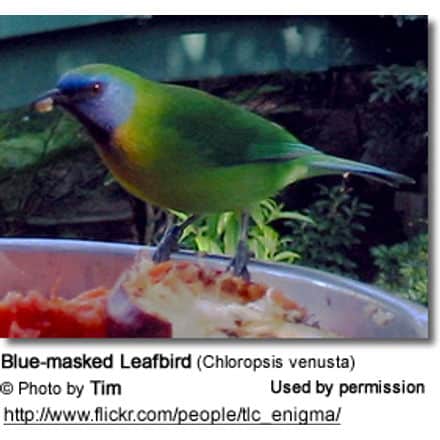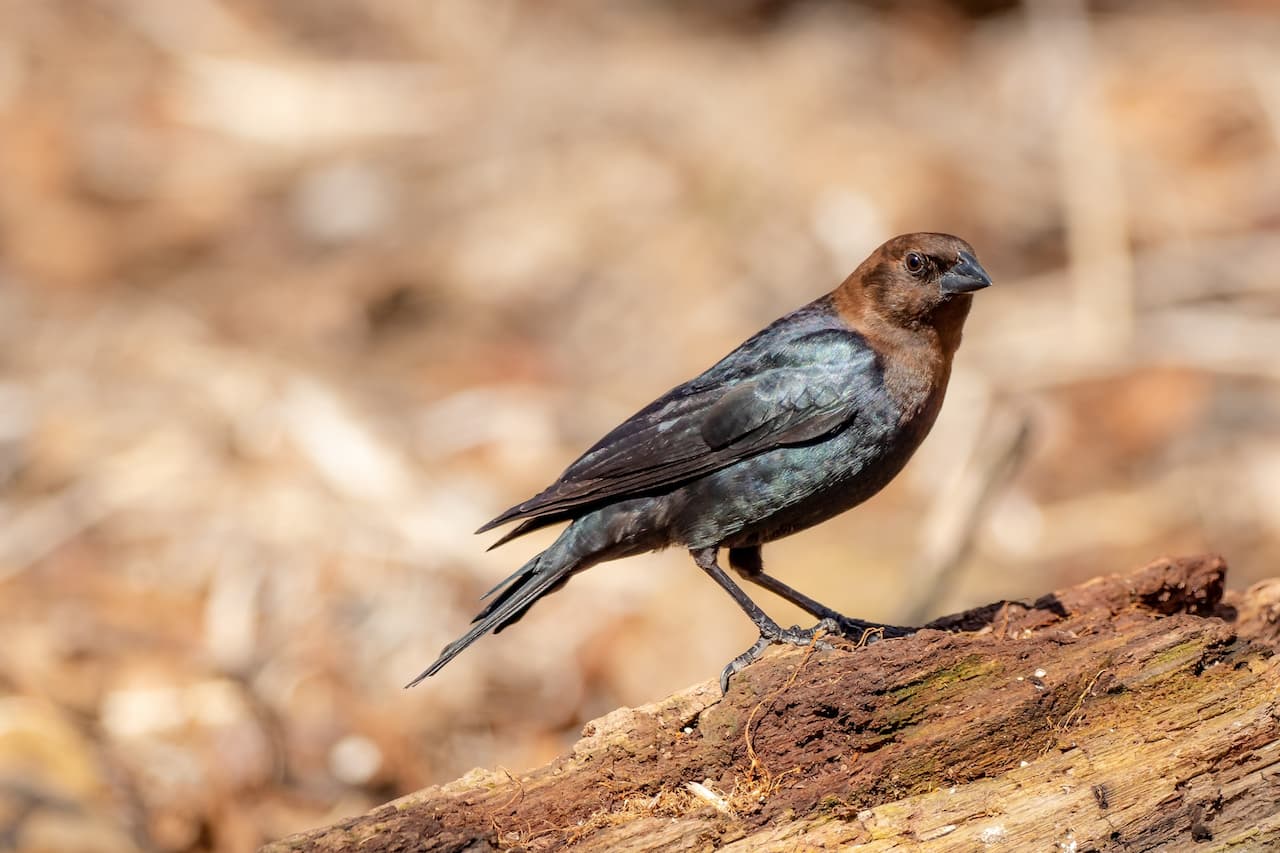Blue-masked Leafbirds
Blue-masked Leafbirds
Leafbird Information … Leafbird Species Index … Leafbird Species Photo Gallery
The Blue-masked Leafbirds (Chloropsis venusta) are small, colorful songbirds that occur naturally in the humid montane forests on the Indonesian island of Sumatra – the westernmost of the Sunda Islands in western Indonesia, They are classified as “Near Threatened” due to habitat loss. Leafbirds usually remain high up in the canopy of trees searching for insects to feed on.
Description
The Blue-masked Leafbirds are the smallest of all leafbird species. They measure about 5.5 inches (14 cm) in length – including their short tails, and weigh about 0.53 oz (15 g).
Leafbirds were named for the fact that their mostly green and yellow plumages blend in well into their tropical habitat, where the green leaves and bright flowers of the canopy provide a perfect camouflage for these birds. However, leafbirds that are stressed will shed most of their colorful feathers. This adaptation may have evolved as a way of confusing predators, such as snakes. Captured birds under stress will do the same.
They have forked, brush-tipped tongues and fairly hefty, straight to lightly down-curved bills with stiff, hair-like feathers at the base that protect their eyes from the legs and wings of their insect prey.
Immature birds look like duller versions of the females.
Similar Species:
Leafbirds resemble bulbuls, but can be identified by their brighter plumages.
Nesting / Breeding
Leafbirds build open cup-shaped nests out of fine stems, leaf parts and rootlets. These nests are typically placed on the ends of branches near the tree crown; although some may hang from thin horizontal shoots of trees, or they are attached to a pair of vertical twigs. The average clutch consists of 2 – 3 pinkish eggs. The incubation lasts about 14 days and is performed by the female alone, while the male feeds the brooding female. Even though unconfirmed, it appears likely, that the male also helps raise the young.
Diet / Feeding
Leafbirds typically forage alone or in pairs in the subcanopy; but some species may occasionally join mixed feeding flocks, while other species defend their feeding territories.
They feed on mostly insects, as well as taking fruits, berries and nectar.
Insects: Their long sharp beaks are curved down slightly and a brush tipped tongue, helping them to pick insects from the bark and leaves of trees. They will also pursue flushed prey into the air or down to the forest floor.
Nectar: Their spiked tongues are well adapted for taking nectar from tubular flowers, such as the Rhabdornis of the Philippines. Like hummingbirds, they will hover in front of a flower while retrieving the nectar. In the process of feeding, the flowers benefit from cross-pollination as the leafbird’s head becomes covered with pollen and spreads from flower to flower. As they move to the next flower, the pollen is deposited on the next flower, which is then able to produce seeds and fruit. Many native plants rely on them for pollination and would not be able to exist without the “services” inadvertently rendered by the leafbirds.
Fruits: Usually, leafbirds swallow pieces of fruit whole. If this isn’t possible, they will pierce the fruits with their beaks and let the juices leak into their mouths.
Calls / Vocalizations
Their attractive songs include various melodious whistles and chatters.
Species Research by Sibylle Johnson
Please Note: The images on this page are the sole property of the photographers (unless marked as Public Domain). Please contact the photographers directly with respect to any copyright or licensing questions. Thank you.






